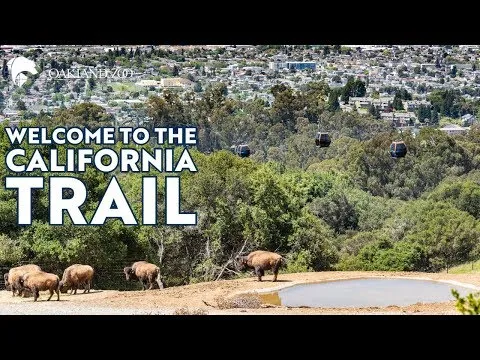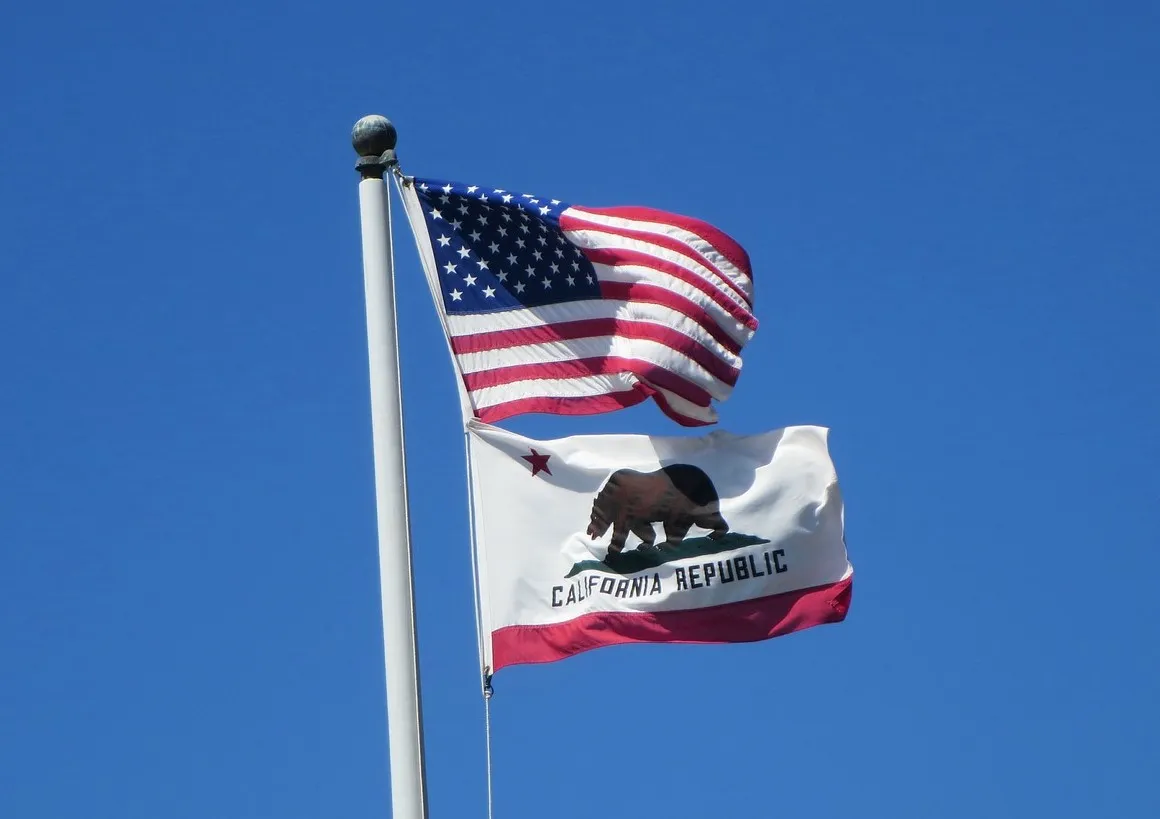
Part 2 of this walk through the zoo centers on the Oakland Zoo’s California Trail, which is relatively new. If you didn't see Part 1, you can find it on my blog. Here is a nice video overview from the zoo of the California Trail.
The Oakland Zoo's California Trail is a stunning attraction that introduces visitors to wildlife species that are (or historically were at one time) native to the state. While most other zoos try to wow visitors with charismatic species from afar, it’s astonishing how many interesting creatures have called this area home at one time or another. Some of them a something of a stretch to consider California natives, but they are welcome anyway.

The gondola (the ski lift kind, not the Venetian boat kind) takes people to the top of the hill where this trail has been created in a section apart from the main part of the zoo. From the gondola, you have nice views towards San Francisco Bay and of animals on the hillside below. These include camels just below you and elephants in the distance. When you get near the top, you see the bison, which is your first view into the California Trail.
Bison, the American buffalo, inhabited the Great Plains during the height of its range. Outside of the bald eagle, there is probably no more iconic American animal than the bison. They provided food and sustenance for Native Americans and of course for predators such as bears and wolves. With the advent of European colonization of the Americas and westward expansion, the herds of Western bison were hunted almost to extinction. From a height of 60 million in the 18th century, the bison was reduced to just 541 individuals.
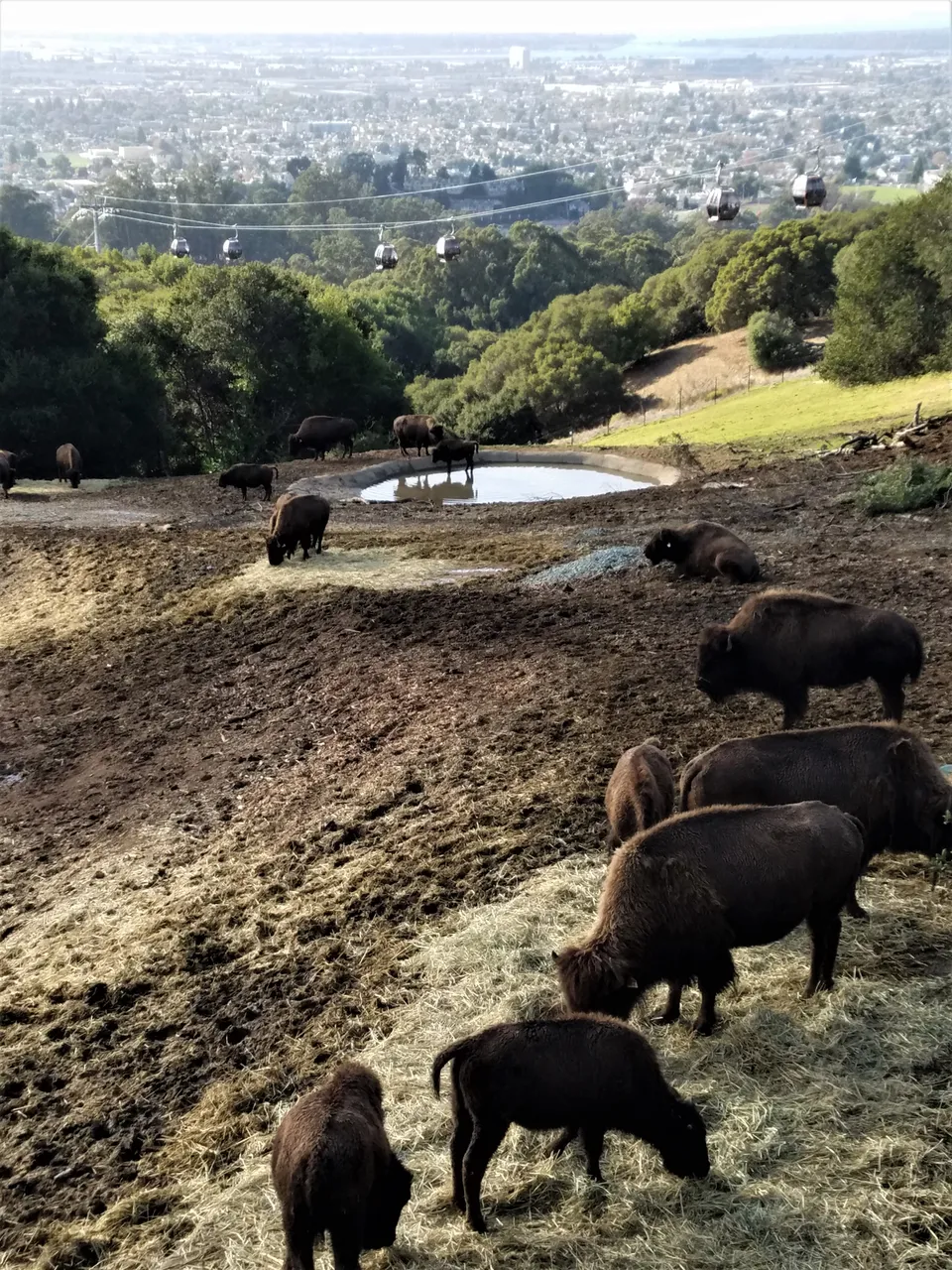
Today, they have reclaimed pockets of the west, particularly certain national parks and wild spaces; they number as many as 500,000. The most well-known bison herd lives in Yellowstone National Park in Wyoming, where the Rocky Mountains meet the Great Plains. There are naturalized herds of them in many places throughout the United States now, some in California. One of the earliest established modern herds was on Catalina Island on the coast off of Los Angeles. Some claim that the far northeastern part of the state may have once been host to bison, but if so, it was not reflected on most maps of historical bison range.
So those bison have a dubious claim as Native Californians. Join the crowd. Go back a few generations, and most of us are immigrants, too. No need to get tribal. Everyone is welcome here if they’re nice, which these bison appear to be.
The California state flag has a picture of a grizzly bear on it. In truth, it looks more like a large pig than a bear, but grizzly it’s supposed to be. While black bears have always inhabited the state’s high country (and still maintain a presence in many mountainous areas around the state), grizzlies were once the apex predator of the lowland areas.
For better or for worse, the grizzly has largely disappeared from the state. ‘For better’ in that grizzlies are very dangerous for human populations to deal with (far more dangerous than black bears, which are mild by comparison). ‘For worse’ in that we have a state flag with animal on it that’s largely extinct in this state and was once an important part of the ecosystem here.
But they are here at the Oakland zoo, along with black bears and other California species. Like some other zoos, which seem to have added some really cool bear habitats in recent decades along with the sensitivity that large predators need a lot more room to roam, these bears have nice sized spaces with their own water and plexiglass viewing areas. It’s fun to watch them roam around and enjoy their surroundings.
It’s great also to see some California condors, a very endangered species of large bird in the vulture family. This is the largest land bird that is native to North America. When they stretch their wings, you can see how much bigger they are than other birds that are native to this region, such as Golden eagles, hawks, and turkey vultures.
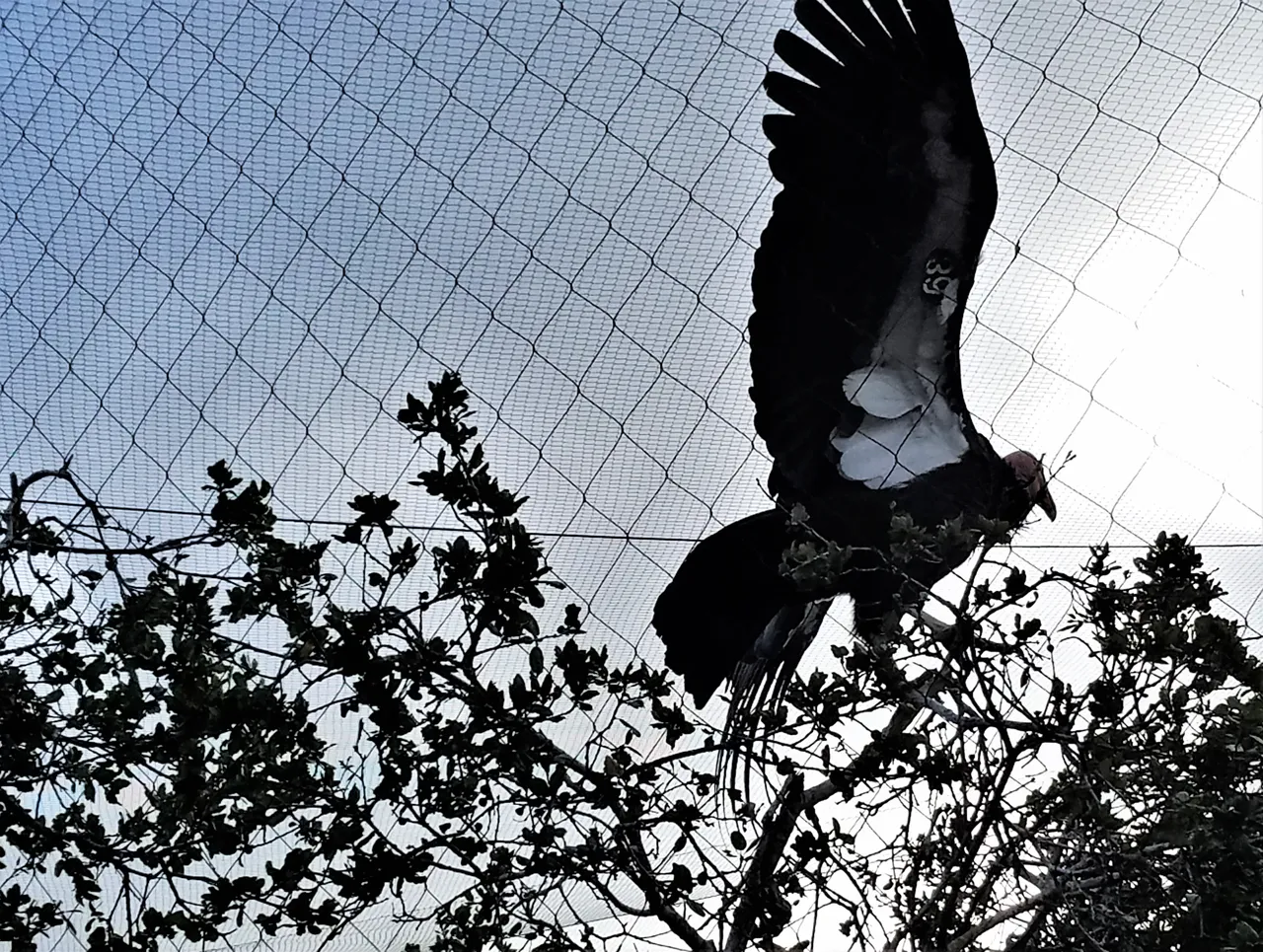
In 1987, with their wild population failing, all 27 remaining California condors were captured. The species officially extinct in the wild, but after a period of time, the captive breeding program succeeded in boosting the bird’s numbers enough to support reintroduction. There are some 463 birds alive today, many of whom have been reintroduced into the wild spaces in California, Arizona, and southern Utah which were part of the condor’s historical range.
The wolves were sleeping on the day I visited the zoo. After a long absence, wolves came back to the northern corner of California just a few years ago. We often see their cousins the coyotes, which have been very successful in expanding their own range in the absence of wolves. Equally successful in recent decades have been the mountain lions (cougars, pumas), which have expanded all over the west and are often seen in cities and towns that border open spaces.
Other big hits amongst visitors at the California Trail are the bald eagles and jaguars. Bald eagles have been establishing themselves around the state recently. I even saw one myself at a lake in California a few years back. I’ve seen more of them in other states; in Alaska, they are everywhere. America’s national bird as always popular with visitors.
The jaguar seems another curious choice as a Californian, but it is accurate. This panther presently inhabits Mexico, Central America, and much of South America. Its historic range also includes the southwestern United States, including far southern California. It’s a beautiful cat with spots and was very active when we were at the zoo because of feeding time.
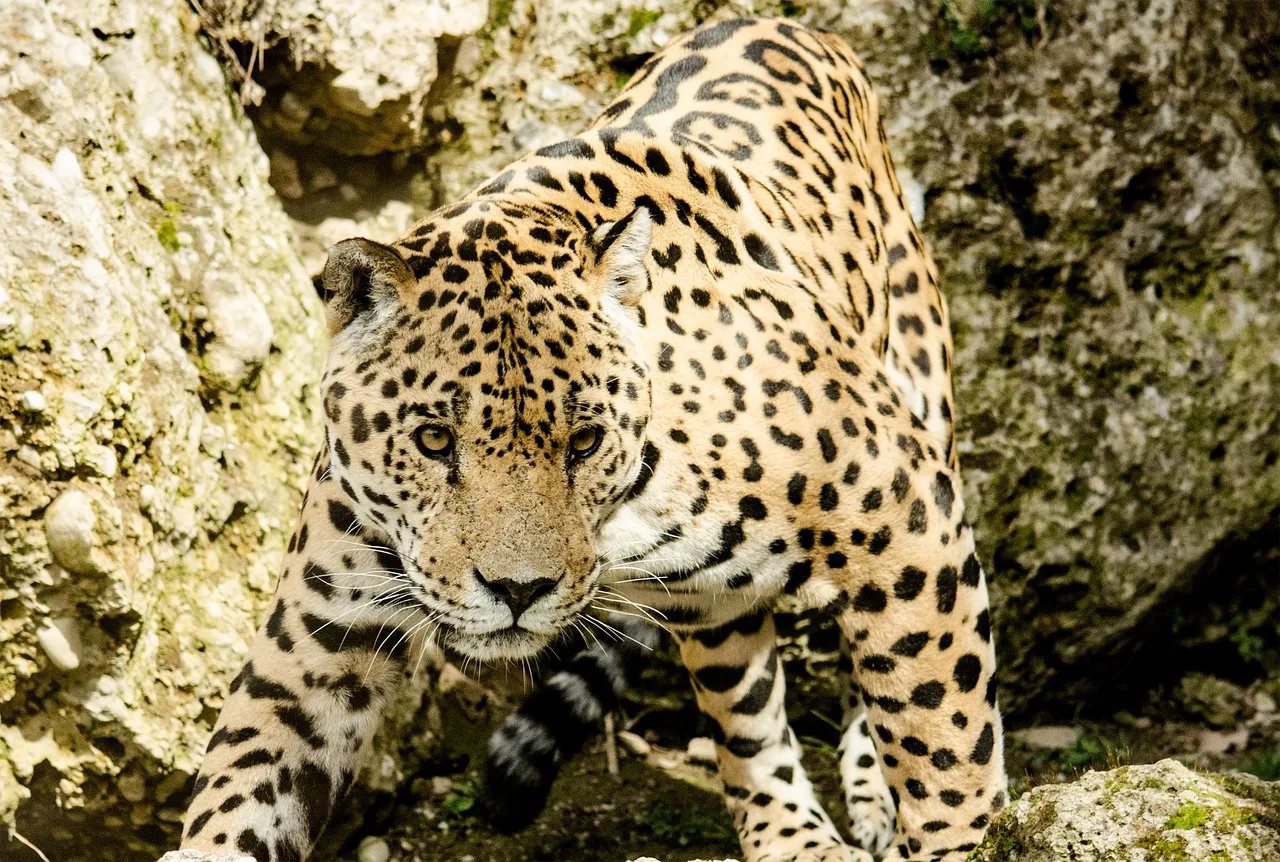
I went through these is somewhat reverse order, as the bears and then bison are the last creatures that most visitors will see. The bison in the foreground with distant views of San Francisco Bay make for some great pictures before boarding the gondolas again for the descent back to the remaining part of the zoo.
All in all, the Oakland Zoo’s California Trail is a thrilling look at several charismatic animals, each of whom has some claim to calling the state its home. In seeing them you realize how much this region once had and has lost due to overhunting, human population expansion, loss of habitat, and the introduction of dangerous chemicals like DDT into the environment in the past. But in many cases, species which roamed the state have been returning (as with the condors, wolves, and eagles).
As much as environmentalists may look down at zoos, it is institutions like these that have been at the forefront of rehabilitation and reintroduction efforts that have saved some of those species from extinction. And a whole lot more youngsters from urban and suburban backgrounds are leaving here with an appreciation of some of the world’s natural treasures. There’s something to be said for that.
This was Part 2 of 2 of this series. You can find Part 1 on my blog also.
References:
https://en.wikipedia.org/wiki/California_condor
https://en.wikipedia.org/wiki/Jaguar
https://en.wikipedia.org/wiki/American_bison
Pictures by the author, except for jaguar and state flag (public domain) and zoo map and video (from Oakland Zoo).
